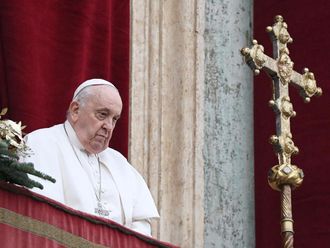
Paris: At least five drones were spotted flying over central Paris landmarks during the night and police were unable to catch the operators, sources close to the probe said on Tuesday.
The country has been hit by a series of mysterious drone overflights at nuclear plants and more recently over the presidential palace, and the fresh sightings come at a time of heightened security following last month’s militant attacks that left 17 people dead.
The first drone sighting was near the US embassy in the French capital just after midnight, prompting police to follow the unmanned aircraft which continued towards the Invalides military museum.
But they soon lost sight of the drone and later in the night, four other pilotless aircraft were spotted at several Paris landmarks including the Eiffel Tower, the Place de la Concorde and the Montparnasse tower, the tallest skyscraper in the French capital.
“It could be a coordinated action but we don’t know for now,” said one source, who asked not to be identified.
“We did everything to try and catch the operators but they were not found,” another source close to the case said.
One police source, who also wished to remain anonymous, said there had never been so many drones spotted over Paris in one night.
In October and November, around 20 of the unidentified aircraft flew over French nuclear plants and their operators were never found.
Then on January 20, a pilotless aircraft briefly went over the presidential palace in Paris, just a week after three days of militant attacks in Paris put the country on heightened alert.
And at the end of January, small drones were spotted near a bay in Brittany that houses four nuclear submarines — one of the most protected sites in the country.
French law bans small civilian drones from areas such as nuclear facilities, which are protected by a no-fly zone that spans a 2.5-kilometre (1.6-mile) radius and a height of 1,000 metres.
Experts say that the small unmanned craft would not pose a threat if they crashed into a hardened nuclear facility, whose reactors are built to withstand the impact of mid-sized commercial planes.
But the country has nevertheless launched a one-million-euro (Dh4.2 million) programme aimed at developing ways of detecting and intercepting them.
Drones come in all shapes and sizes, and have a variety of uses, from widely reported military applications to surveillance, filmmaking, sports, disaster relief and scientific research.
The most basic unmanned aircraft are radio-controlled by someone nearby, but other more sophisticated models can be preprogrammed, and these are widely available for just 350 to 400 euros.












